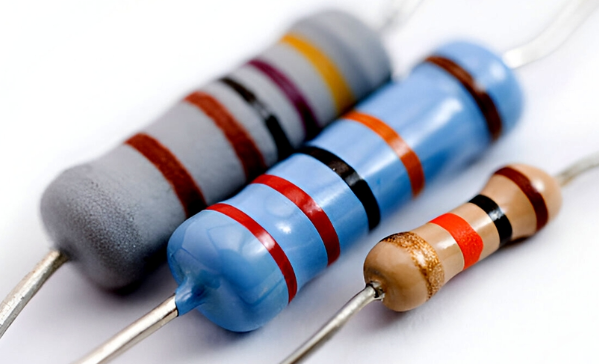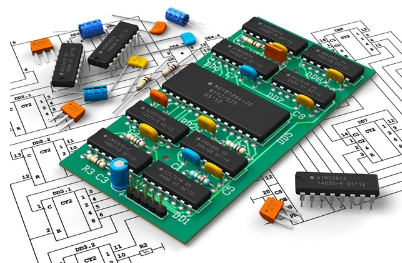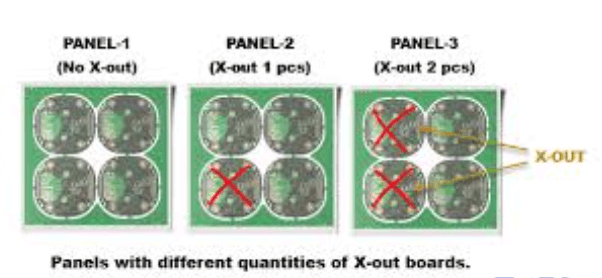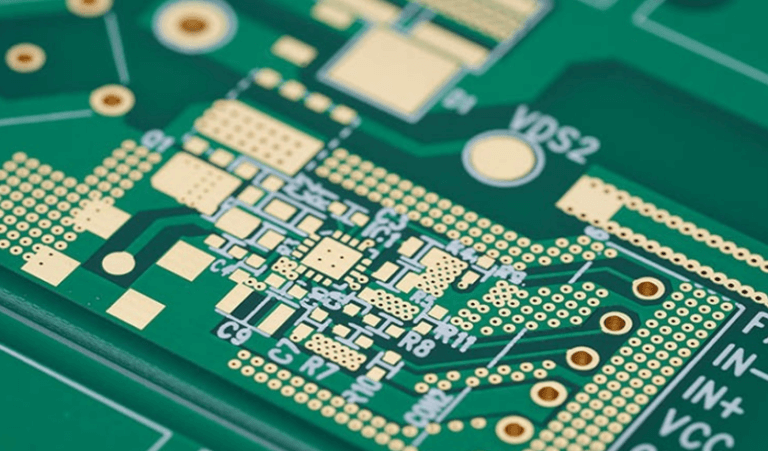How to Select PCB Components: A Comprehensive Guide
Printed Circuit Board (PCB) design is a complex process that requires careful consideration of every component used. Selecting the right components is crucial for the functionality, reliability, and cost-effectiveness of your electronic device. This 2000-word guide will walk you through the essential factors to consider when choosing PCB components.
Understanding PCB Component Selection
Component selection is one of the most critical phases in PCB design. The components you choose will determine:
- The board’s electrical performance
- Manufacturing feasibility
- Product reliability
- Overall cost
- Time-to-market
- Long-term availability
Poor component selection can lead to design failures, production delays, and increased costs. Conversely, well-chosen components can enhance performance, simplify manufacturing, and reduce total product cost.

Key Factors in PCB Component Selection
1. Electrical Requirements
The primary consideration for any component is whether it meets the electrical requirements of your circuit:
Voltage Ratings: Ensure components can handle the maximum voltage in your circuit with sufficient margin (typically 20-50% above expected maximum).
Current Ratings: Components must withstand the maximum current without overheating or failing. Consider both continuous and peak current requirements.
Power Ratings: Verify that power dissipation doesn’t exceed component specifications, especially for resistors, transistors, and ICs.
Frequency Characteristics: For high-frequency applications, consider component frequency responses, parasitic effects, and impedance matching.
Tolerance: Component tolerance affects circuit accuracy. Determine how precise each component needs to be for proper functionality.
2. Physical Characteristics
Package Size and Type: Consider both the footprint (PCB layout) and the 3D space the component occupies. Common packages include:
- Through-hole (DIP, SIP)
- Surface mount (SMD/SMT – SOIC, QFP, BGA, etc.)
- Chip-scale packages
Height Restrictions: Ensure components fit within enclosure constraints, especially for compact designs.
Mounting Style: Decide between surface mount (SMT) and through-hole based on manufacturing capabilities, reliability needs, and space constraints.
Pin Count and Pitch: Verify that the component’s pin configuration matches your design requirements.
3. Environmental Considerations
Operating Temperature Range: Components must perform reliably across your product’s expected temperature range.
Humidity and Moisture Resistance: Important for products exposed to humid environments or requiring washing.
Vibration and Mechanical Stress: Critical for automotive, aerospace, or industrial applications.
Chemical Exposure: Consider if components will be exposed to solvents, oils, or other chemicals.
Outdoor vs. Indoor Use: UV resistance and weatherproofing may be necessary for outdoor applications.
4. Availability and Sourcing
Lead Time: Check component availability and delivery times to avoid production delays.
Lifecycle Status: Prefer components marked as “active” or “recommended for new designs” rather than “not recommended for new designs” or “obsolete.”
Multiple Sources: Whenever possible, choose components available from multiple manufacturers to reduce supply chain risks.
Minimum Order Quantities (MOQs): Be aware of any minimum purchase requirements that might affect small-scale production.
Regional Availability: Consider geopolitical factors that might affect component supply from certain regions.
5. Cost Considerations
Unit Price: Compare prices from different suppliers for the same component.
Volume Discounts: Understand how pricing changes at different quantity breaks.
Total Cost of Ownership: Include factors like shipping, handling, storage, and potential rework costs.
Alternative Components: Identify potential substitutes that offer similar performance at lower cost.
6. Reliability and Quality
Mean Time Between Failures (MTBF): Important for critical applications where reliability is paramount.
Quality Standards: Look for components meeting relevant industry standards (AEC-Q for automotive, MIL-SPEC for defense, etc.).
Manufacturer Reputation: Prefer components from reputable manufacturers with proven quality control.
Failure Rate Data: Review available reliability data when possible.
7. Manufacturing Considerations
Assembly Process Compatibility: Ensure components are compatible with your manufacturer’s processes (reflow temperatures, cleaning methods, etc.).
Handling Requirements: Some components may require special handling (moisture-sensitive, ESD-sensitive).
Testability: Consider how easily the component can be tested during manufacturing.
Rework Feasibility: Some components (like BGAs) are more difficult to rework than others.

Component-Specific Selection Guidelines
Integrated Circuits (ICs)
- Functionality: Clearly define required features to avoid over-specifying.
- Interface Compatibility: Ensure voltage levels and protocols match other components.
- Power Consumption: Critical for battery-powered devices.
- Clock Speed/Processing Power: Match to application requirements.
- Package Options: Balance ease of assembly with space constraints.
Resistors
- Type: Carbon film, metal film, thick film, wirewound, etc.
- Power Rating: Ensure adequate power handling capacity.
- Tolerance: Standard (5%, 10%) or precision (1%, 0.1%).
- Temperature Coefficient: Important for precision applications.
- Size: Balance space requirements with power handling.
Capacitors
- Type: Ceramic, electrolytic, tantalum, film, etc.
- Voltage Rating: Adequate margin above operating voltage.
- Capacitance Value and Tolerance: Match circuit requirements.
- ESR (Equivalent Series Resistance): Critical for power supply filtering.
- Temperature Stability: Especially important for timing circuits.
Inductors and Transformers
- Inductance Value: Match circuit requirements.
- Current Rating: Must handle maximum expected current.
- DC Resistance: Affects efficiency in power applications.
- Saturation Current: For inductors in switching circuits.
- Isolation Requirements: For transformers.
Connectors
- Current Rating: Per pin and total.
- Mating Cycles: Expected lifespan.
- Locking Mechanism: For vibration-prone environments.
- Pitch and Pin Count: Match design requirements.
- Environmental Sealing: If needed.
Discrete Semiconductors (Diodes, Transistors)
- Voltage/Current Ratings: Adequate for application.
- Switching Speed: For digital applications.
- Forward Voltage Drop: Affects power efficiency.
- Package Power Dissipation: Must handle expected heat.
Best Practices for PCB Component Selection
- Start Early: Begin component selection during schematic design, not after.
- Create Approved Vendor Lists (AVLs): Maintain lists of preferred components and suppliers.
- Use Component Libraries: Build and maintain verified component libraries for your design tools.
- Design for Manufacturing (DFM): Consult with your manufacturer during component selection.
- Consider Future Proofing: Think about long-term availability and potential redesigns.
- Document Decisions: Keep records of why specific components were chosen.
- Simulate When Possible: Use SPICE or other simulation tools to verify component choices.
- Prototype and Test: Always verify component choices with real-world testing.

Common Mistakes to Avoid
- Over-specifying Components: Choosing components with capabilities far beyond requirements increases cost unnecessarily.
- Ignoring Lead Times: Not accounting for component availability can delay entire projects.
- Neglecting Thermal Considerations: Failing to account for heat dissipation can lead to reliability issues.
- Miscounting Pinouts: Assuming pin compatibility between similar components can cause errors.
- Underestimating Power Requirements: Components operating near their limits may fail prematurely.
- Overlooking ESD Protection: Sensitive components may require additional protection circuits.
- Ignoring Alternative Packages: Sometimes a different package can solve layout challenges.
- Forgetting about Test Points: Ensure critical signals are accessible for testing and debugging.
Tools to Assist in Component Selection
- Component Search Engines: Octopart, FindChips, etc.
- Lifecycle Management Tools: SiliconExpert, IHS Markit.
- PCB Design Software Libraries: Altium, KiCad, Eagle component libraries.
- Manufacturer Websites: Often have advanced search and selection tools.
- Distributor Websites: Digi-Key, Mouser, etc., offer parametric searches.
The Future of Component Selection
Emerging trends affecting PCB component selection include:
- Miniaturization: Continued demand for smaller components.
- Higher Integration: More system-on-chip (SoC) solutions.
- IoT Optimization: Components optimized for low-power wireless applications.
- Automotive Electronics: Components meeting stringent automotive standards.
- Supply Chain Digitization: Better tools for tracking component availability.
- Sustainability: More focus on recyclable and environmentally friendly components.
Conclusion
Selecting the right PCB components is both an art and a science. It requires balancing technical requirements, cost considerations, availability, and manufacturability. By following a systematic approach to component selection—considering electrical characteristics, physical constraints, environmental factors, and supply chain issues—you can create PCB designs that are reliable, cost-effective, and easier to manufacture.
Remember that component selection isn’t a one-time task during the design process. As your design evolves and as market conditions change, you may need to revisit your component choices. Maintaining flexibility while adhering to sound selection principles is key to successful PCB design.
By investing time in proper component selection early in the design process, you can avoid costly redesigns, manufacturing delays, and field failures—ultimately leading to better products and more successful projects.




